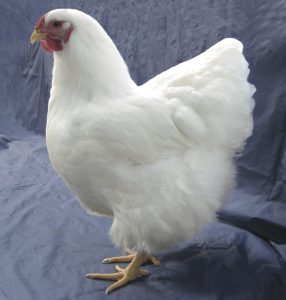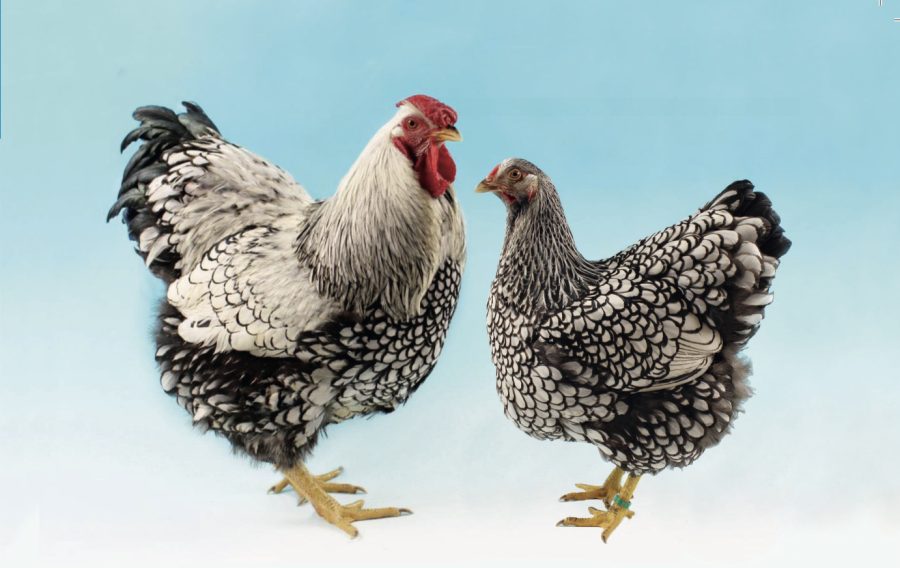Grant Brereton takes a look at the different feather categories with pure breed chickens and explores the ‘hard or soft’ concept.
When I got into poultry seriously in the late 90s, it was a bit of a foggy experience to really penetrate what seemed like, for many years, a non-existent world to me. Imagine there being all sorts of different keepers of every pure breed you could think of or had read about in books. Imagine being friends with many of those people and really being immersed in that world. But, at the time, that’s all I could do – imagine!
With no social media or smartphones, my journey into pure chickens would be a slow one. It started by looking up ‘for sale’ ads in the local free ads paper, or in the back of esteemed publications like this one. Friendships were born and there was no going back – I’d entered ‘chicken world’ and was here to stay!
However, the road ahead would be long with many lessons learned along the way. My problem is, once I learn a snippet of information or learn a lesson the hard way, I have this innate need to share with others and prevent them from making the same mistakes. I guess that’s just part of being human. But I do (or did) have this tendency to come across as ‘the expert’ without always earning the necessary stripes. I’d certainly never refer to myself as such; I prefer ‘seasoned enthusiast.’
AM I SOFT?
Where am I going with this? Well, let’s just say I was well and truly humbled (or rumbled) in my local pub one night many years ago, which was a great lesson for me. I was two-three years into my new era of keeping and breeding purebred poultry. As you can imagine, by now I had visited rare breed centres and a few sales, so accessing these birds was relatively easy (compared to how it used to appear). I fancied so many different breeds, colour varieties, sizes and styles of poultry that I soon had ‘a lot on.’
So we’re in the pub, friends and girlfriend all stood round with drinks. Me fancying myself as a bit of a chicken expert – and then it happened… my punk rocker friend introduced me to another chicken keeper. She said (or shouted): “Grant, meet X… he’s mad about chickens too!” Then she was off to the juke box
to put on yet another Ramones offering.
X seemed a bit, well let’s just say, ‘not the friendliest!’ His first words uttered: “So, what do you keep then, hard or soft feather?” There, with one quick question, I was rumbled. I recall thinking, ‘oh gosh I simply don’t know… how to get out of this one?’ I couldn’t!
After hearing my extensive list of breeds and colours within them, X proceeded to inform me that I indeed kept ‘soft feather’ varieties and that hard-feathered chickens tended to be the Game fowl. An ‘aha’ moment and a quick lesson (despite the humiliation); I now understood that there was ‘hard or soft feather’ varieties of poultry from which to choose.

White Wyandottes can get away with a little fluff creeping into the thigh area
DELVING DEEPER…
So it would appear quite simple – a Game bird such as Old English Game is hard feather, and an Asiatic-derived Cochin is soft feather. These examples would be fairly obvious to those considering the feather types of both specimens – based entirely on their visual appearance. The Old English Game is tight-feathered, and some specimens even have little feather coverage on their keel (breast) bones.
By marked contrast, the Cochin has a profusion of feathers all over, including the legs and feet. These feathers are very soft and sometimes can give an overall impression (an optical illusion) of a bigger bird than actually lies beneath.
So really, it would be more accurate to say that rather than completely different animals, the hard or soft feather labels arose depending on where each pure breed stood on the feather spectrum. There are certainly many breeds that could be classed as ‘not so obvious’ to label. But we’re human, so we tend to say that if you’re not in one camp, you must be in the other.
If we put our focus heads on for a minute, it doesn’t take much to realise that many breeds vary (even if slightly) on the feather spectrum within the available plumage varieties. Take an obvious ‘soft feather’ variety like the Wyandotte, where, in general, the Whites in the UK are more profusely feathered than the other Wyandotte varieties.
Because there is no plumage pattern to consider in the White, then feather zones can morph subtly or dramatically, depending on what is deemed acceptable or necessary. Close inspection of some White Wyandottes reveals that the fluff below the vent often creeps (almost like ground elder) around the corner to
the thigh area. So in other words ‘non- webbed’ thigh feathers, which are a big no-no in patterned breeds, where you need the larger end part of the feather to be webbed (in order for the respective pattern to be expressed).
So let’s say a Buff Cochin would be softer feathered than a White Wyandotte, but a White Wyandotte would be softer feathered than a Silver Laced Wyandotte, which would be softer feathered than a Barred Plymouth Rock. But all are in the ‘soft feather’ category. There are just specific differences between them based entirely on each individual breed’s standard, and what is required from the feathers, to allow for the most desirable representations to be produced.
MANY CONSIDERATIONS
Each overall plumage effect in terms of feather density, will be based on a number of factors. In my view, ‘natural selection’ comes first, so in other words, feathers morphed/evolved in any number of ways to accommodate the natural environmental conditions of the inhabitants. Take the Chantecler fowl – a Canadian breed that is famed for being able to withstand really cold temperatures. On close inspection you can see that the ‘fluffy’ under parts of the body feathers are longer than many other soft feather breeds, which is believed by keepers to help insulate them during really cold periods.
So take the aforementioned ‘under- feather’ and then you’ve got feather width, length, structure, shape, profusion, colour (or lack of ), growth rate, growth angle, plus environmental and dietary influences, and there’s a lot going on. We select, almost invariably, for what visually pleases us. If we look at many breeds, there’s almost always one particular variety that is the epitome of that breed, leaving the other colour options falling somewhat short.
The reasons for one variety excelling in terms of ‘ideal breed specimen’ could be many and varied, including fashion or popularity, but in my view, plumage and the attainability of which, likely plays a part too. That along with the undeniable mix of breeds in each variety’s ancestry, and the challenge is really on to get them all the same shape, size and conformation.
Really, it would have been easier if my new friend ‘X’ in the pub had just asked what breeds I kept in the first place, but then I suppose I wouldn’t have expanded my knowledge. You could question the need to know this information, but it will serve in your best interests when entering a show, for example. Will your breed be a contender for best hard or soft feather? Time will tell. Some quick research as to what variety of ‘feather’ you keep, will soon give the answer.
Main image caption: Large Silver Laced Wyandottes – patterns like this need good webbed thigh feathers to complete the overall effect\
To receive regular copies of The Country Smallholder magazine featuring more articles like this, subscribe here.
For FREE updates from the world of smallholding, sign up for The Country Smallholder newsletter here.







